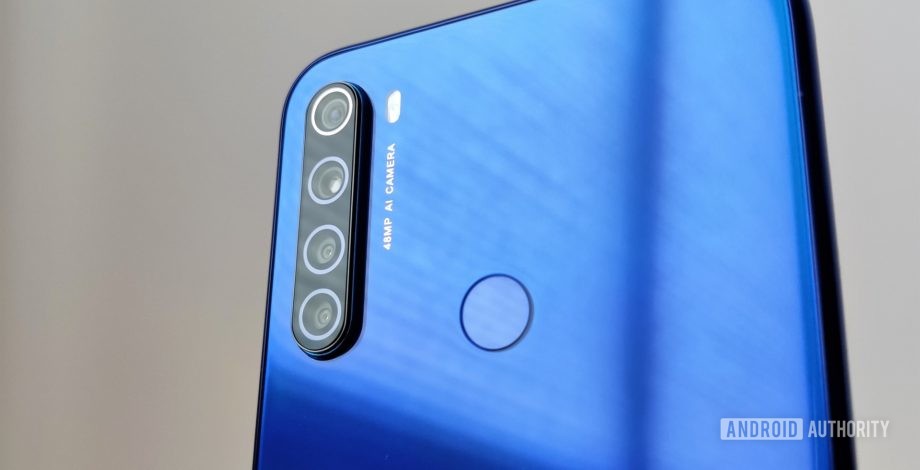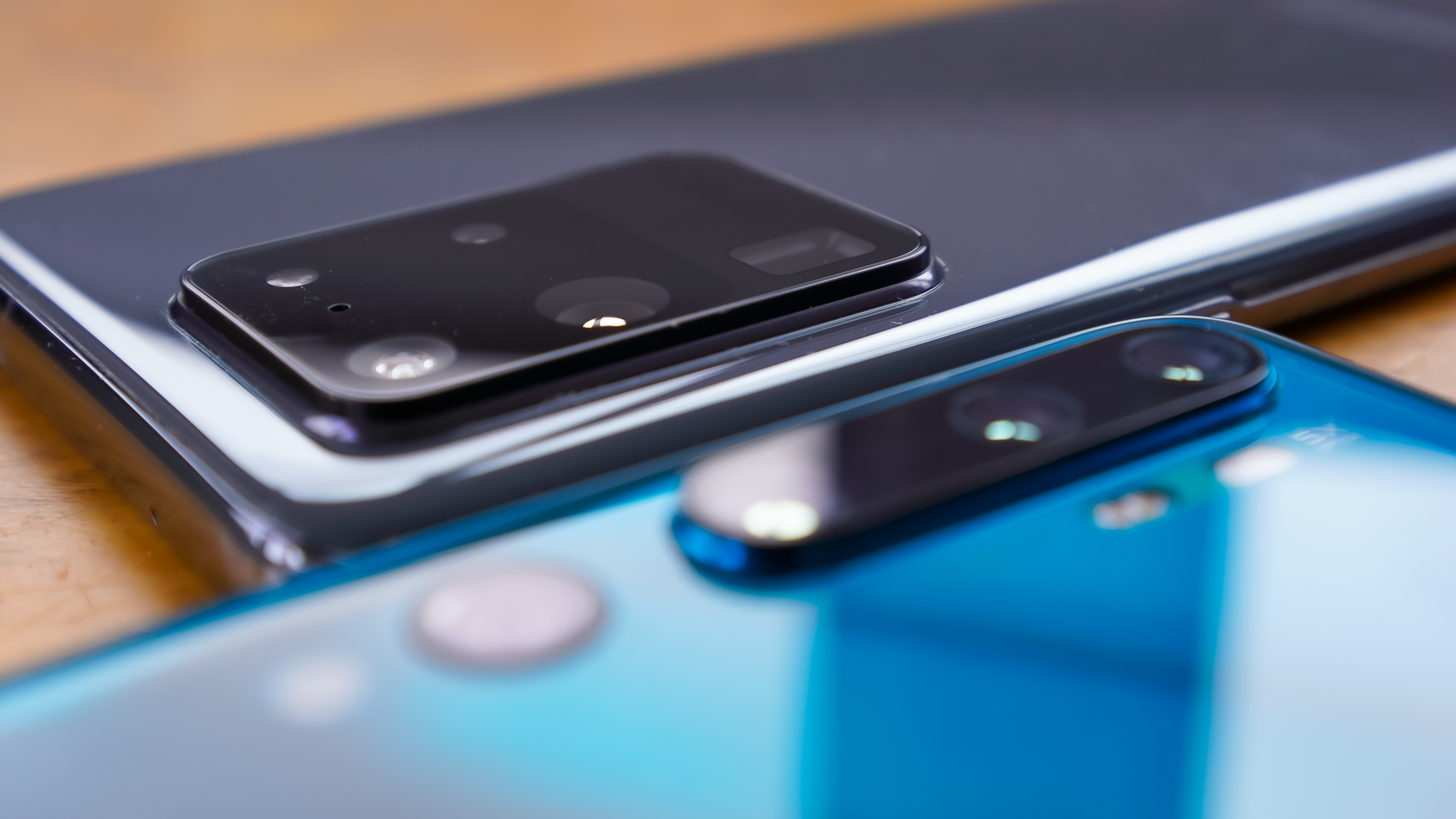Credit: Nick Fernandez / Android Authority
It seems like just the other day that LG launched the V40 with its main-telephoto-ultrawide triple rear camera setup that would eventually form the backbone of many a premium phone’s photography suite.
The smartphone world has gone even further since then though, with brands pushing the number to four or in some ill-advised cases as many as five cameras.
Everyone from Huawei and Samsung to Xiaomi and OnePlus seem to be hopping on this trend of adding more and more cameras, but it’s worth stressing once again that increasing the number of cameras does not guarantee better picture quality — and manufacturers certainly know this.
These brands nevertheless choose this approach because it’s a cheap marketing trick to use in their promotional materials. Whether it’s the recent Xiaomi Redmi Note entries, Realme‘s budget phones, Samsung’s Galaxy A family, or Huawei’s mid-range phones, there are loads of examples of devices with unnecessary extra cameras that seem to be there simply to pad the numbers.
Related: The best Android camera phones you can buy
Quantity =/= quality
Credit: David Imel / Android Authority
Macro cameras and depth sensors are two of the most popular extra cameras and, excuse me if this sounds obvious but… they don’t magically add up to deliver a better overall photo. The addition of these cameras have almost nothing to do with the actual picture quality when shooting a standard photo via the main camera. In fact, the biggest contributing factor to better image quality is the main camera hardware and a brand’s image processing software.
Whether it’s the introduction of a better main image sensor, optical image stabilization to reduce blur, or better camera software, all of these additions actually have an impact on overall picture quality. So why add these particular cameras in the first place then?
Read: What is macro photography?
A depth camera might be handy for portrait mode and depth of field effects, but it’s only contributing depth data to the main camera. Many brands these days are able to gather depth data via software algorithms or other, more useful cameras.
Meanwhile, macro cameras are used for taking close-up shots, but today’s brands are largely using token 2MP sensors (e.g. OnePlus 8 and many budget phones) that don’t offer much detail at all.
So clearly most brands seem to be using depth sensors and macro cameras to make up the numbers rather than as part of a concerted effort to actually deliver better image quality. But there are extra cameras worth having on a phone though, either offering a wildly different perspective or improving overall image quality.
When more cameras are welcome
Credit: David Imel / Android Authority
One of the more common additions these days is the ultra-wide camera, taking snaps that are wider than a typical main camera. This is ideal for buildings, landscapes, group photos, and other situations where you want to cram as much as possible into the frame. Many ultra-wide cameras are also capable of taking macro shots too, and at a higher resolution than those sketchy 2MP macro sensors. Ultra-wide cameras are available on everything from the low-end Samsung Galaxy A11 to high-end phones like the Galaxy S20 series and iPhone 11 family.
Zoom cameras such as periscope or telephoto lenses are another truly handy addition too. These cameras offer much better zoom quality than phones relying on digital zoom alone. These cameras allow you to get Instagram-worthy images from afar rather than a blurry mess. Examples of phones with zoom-enabled cameras include recent Huawei flagships, the OnePlus 7T, and Samsung’s recent flagships.
We’ve even seen the likes of Huawei, Oppo, and Xiaomi offer two zoom cameras on a phone, with one being for short-range zoom (2x to 3x) and the other handling long-range zoom (5x or 10x). This way, image degradation is kept to a minimum across a variety of zoom factors. Phones with two zoom cameras include the Xiaomi Mi Note 10 and Huawei P40 Pro Plus.
When it comes to cameras, quality is more important than quantity.
Some older phones like the Huawei P20 series and Nokia 8 offer monochrome cameras as secondary sensors too. This type of camera can have a direct impact on overall image quality (especially at night), as it can gather more light than a traditional camera sensor. It can also be used for true monochrome shots and to gather depth information as well.
So why don’t more brands adopt these useful cameras then? Well, at least one manufacturer told us that macro cameras were considerably cheaper to implement than something like a telephoto lens. Furthermore, most brands already offer ultrawide cameras as the secondary shooter. As for monochrome cameras, they have fallen out of favor in recent times as brands use computational photography smarts or RYYB camera sensors to improve low-light picture quality instead.
Better extra cameras or none at all
Credit: Dhruv Bhutani / Android Authority
It’s time for manufacturers to either bring truly useful extra cameras to the table or to ditch them completely. Sure, the average consumer might be swayed by fancy “quad-camera” marketing at first, but what happens when the user realizes the extra cameras are pointless? What if the offending brand decides to launch a quad-camera phone with useful extra cameras down the line? It has the potential to turn into a “boy who cried wolf” situation.
 Loading poll
Loading pollInstead, the money that would’ve been spent on a depth sensor or macro camera can go towards improving the main camera. Whether it’s by implementing a better sensor, optical image stabilization, or improved software, this would all have a more meaningful impact on photo quality. We’d even be happy to see brands taking the cash that would’ve been spent on a depth sensor or macro camera and spending it on improving ultra-wide cameras and selfie snappers too.
So the next time you see a smartphone manufacturer boasting about having a quad-camera phone, just remember that it’s likely a case of quantity over quality.






